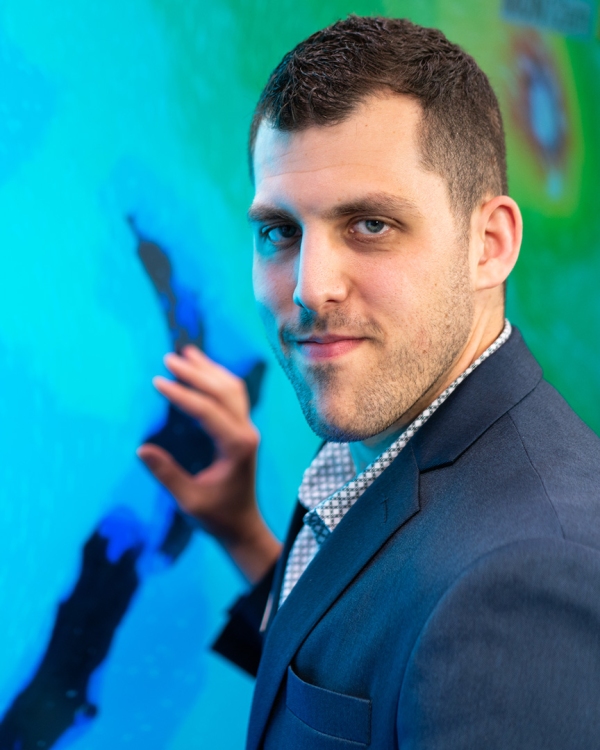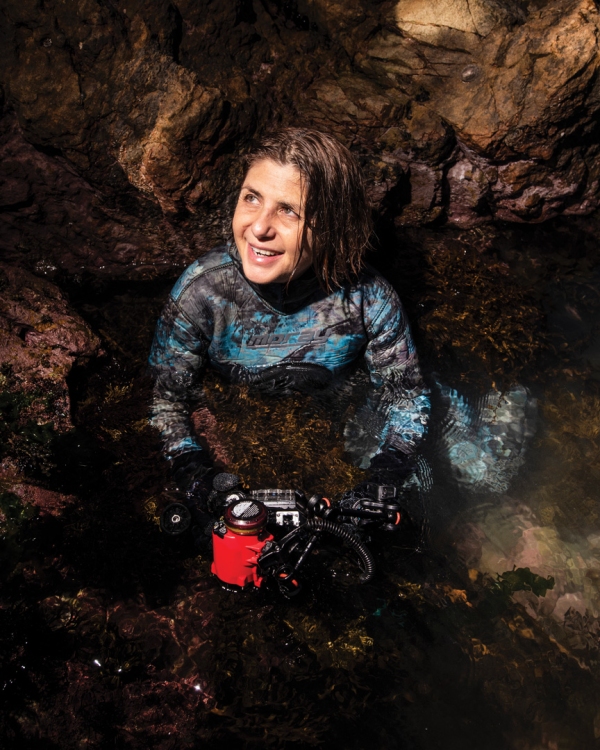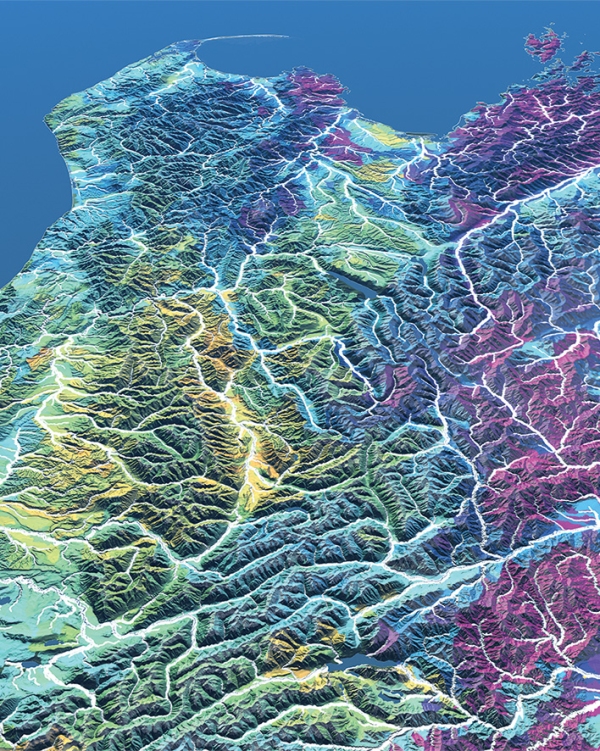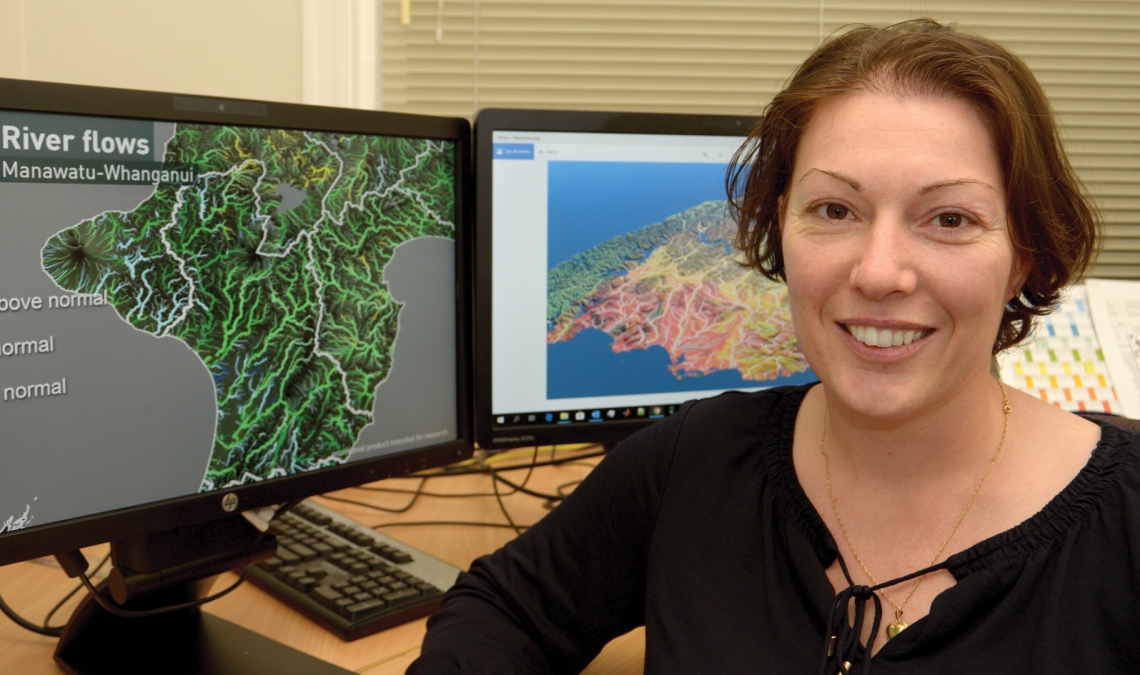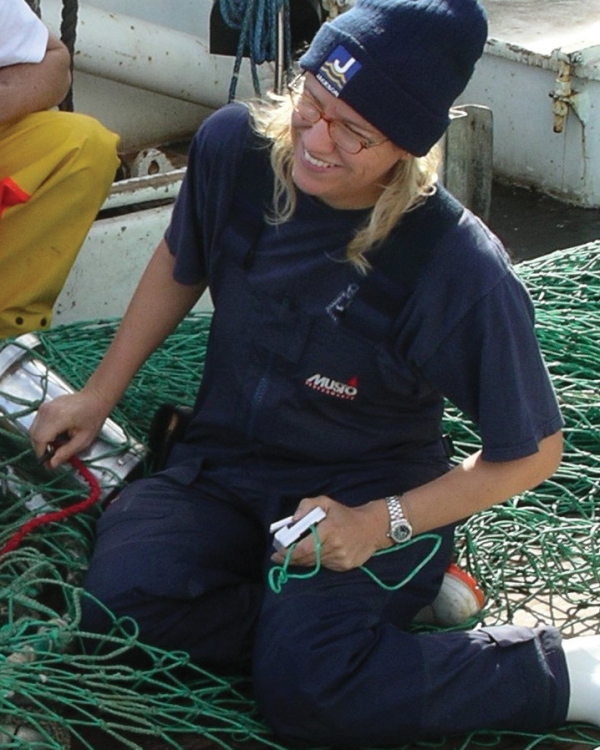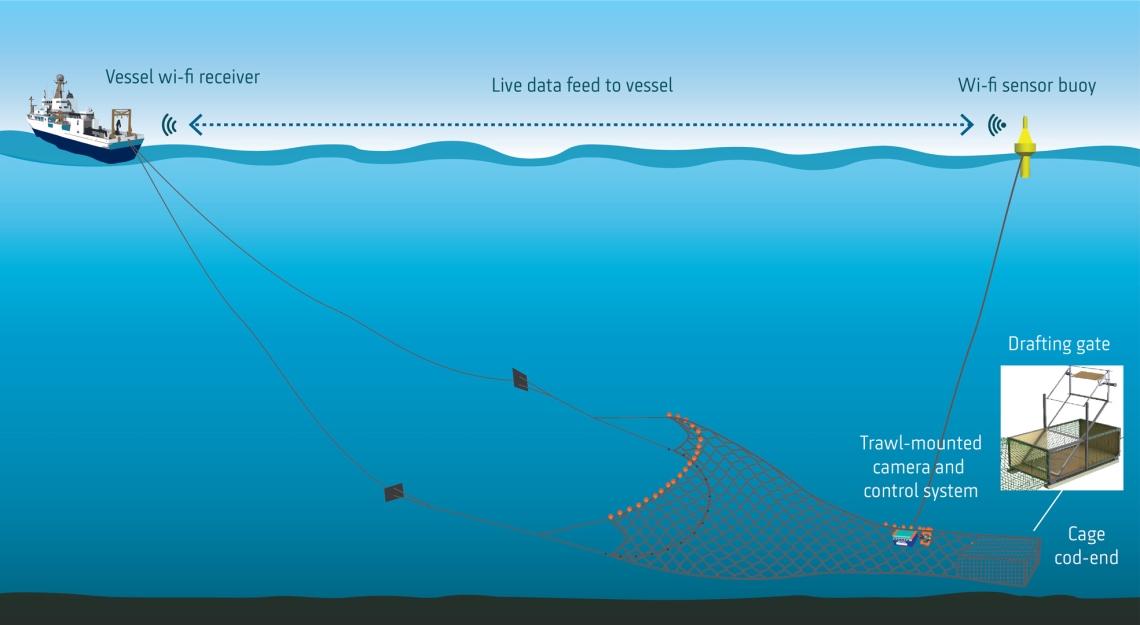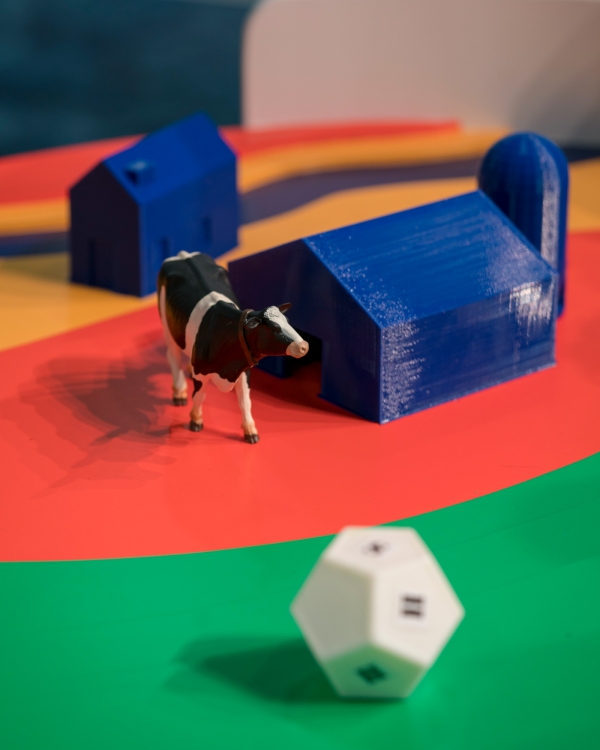Climate is the new weather
Scientifically, says meteorologist Ben Noll, we have the weather sussed.
We know what causes it, where it comes from, how it forms, why it rains one day and is sunny the next. We also know what it’s going to do tomorrow and the day after, and we can take a pretty good stab at what it’ll do next week.
“We can give a really solid forecast that will be accurate for 28, 29 days of the month,” says Ben.
So, job done then? Not quite. These days, at least for meteorologists, climate is the new weather. In other words, the focus has moved to using climate patterns to predict what the weather might do months – or more – into the future.
Think of it this way: in 2003 a five-day weather forecast was as good as a one-day forecast in 1953. Fast forward to 2020 and a five-day forecast is as good as a three-day one in 2003.
“This illustrates that the time horizon upon which we can make accurate forecasts has increased dramatically. Now we are moving into the longer-range projection space and letting the machines handle the weather.”
For NIWA, one example of this is extending the utility of the New Zealand Drought Index (NZDI). This sits on NIWA’s website and is a climate data-based indicator of drought. It is presented as a map, updated daily, and has five categories: dry, very dry, extremely dry, drought and severe drought.
For a snapshot of how New Zealand is faring in prolonged dry spells it is an extremely useful tool.
“But what if we can create a forecast of the NZDI? We have talked about using the information we have to forecast where that drought will occur over an entire season,” says Ben.
NIWA is also working with Emirates Team New Zealand as it counts down to the next America’s Cup. NIWA uses its supercomputers to run weather models at higher resolutions than ever before. The forecasts are so detailed, says Noll, you can see the wind bending around tiny islands in the Hauraki Gulf.
“These models help us understand the atmospheric and sea state better than ever, and to see Emirates applying and using our model is really exciting.”
The supercomputers also run what are known as “ensembles”, in which weather models are processed 18 times, and the differences between them analysed to better understand the potential for hazards and extremes.
Work is also ongoing to combine seasonal forecasting modelling with machine learning to identify weather extremes over a given season, with the aim to forecast how many days might exceed 30 degrees or have more than 25 mm of rain, and much more.
You might even say – as Ben does – that the future looks bright for forecasting.
Tangled up in blue
It was love at first sight. Roberta D’Archino was 18 years old when she discovered the beauty of seaweed for the first time. She was scuba diving off the Tuscany coast in Italy in 10m of crystal-clear water.
“It was my first dive and I thought I would be interested in fish and invertebrates, but when I saw the red patch of seaweed, I stopped. The instructor had to move me away. Nobody could tell me what the seaweed was, so I was really intrigued.”
Roberta is now Dr Roberta D’Archino, and the marine algae specialist is still very much intrigued. She has worked at NIWA for 14 years and says we have a lot to learn about our seaweed.
“We know we have more than 1000 species in New Zealand, and many species are still undescribed. Every time I go scuba diving I come back with something new.”
She knows one thing for certain, however – seaweed looks set to play an increasingly important role in New Zealand’s future.
Marine ecosystems need seaweeds. They protect coastal habitats from the impact of waves. They allow biodiversity to flourish, providing shelter and food for other marine inhabitants, such as fish, pāua and lobsters.
But seaweeds also deliver crucial services to those living above the water. As well as a growing list of nutritional and medicinal products, seaweeds produce oxygen, absorb nitrogen and, significantly, fix carbon. They may even help mitigate the amount of methane livestock produce.
So how do we gauge the size of the potential carbon sinks stretching along our coastline? And are New Zealand’s seaweed stocks in a state of growth or in decline? Scuba divers working their way through kelp beds to ground truth images derived from satellites or drones make slow progress in answering these questions.
Thankfully, Roberta and her colleagues have devised a clever alternative. It involves towing a video camera behind a boat and using a computer – and a specially-developed artificial intelligence (AI) programme – to analyse the resulting video back in the lab.
AI is not only cost effective, it is up to 75 times faster than a human can operate and unerringly accurate.
“It can identify the three common species of brown algae along the Wellington coast with more than 90% accuracy.”
It is a big step towards surveying our seaweed resource at scale and setting up the frameworks needed to enhance our “blue carbon” potential.
Equally important for the woman intrigued by all things seaweed, it is a tool that should help New Zealand’s seaweed forests flourish for generations to come.
A river runs through it
At 5.45pm on 27 March 2019, a state of emergency was declared in Westland. A prodigious front had descended on the South Island’s West Coast, bringing record rainfall.
Swollen rivers burst their banks and just hours later floodwaters washed away the Waiho bridge – severing the only road running through south Westland. The rainfall was a sobering reminder of the threat posed by climate change. New Zealand is expected to experience more frequent and more intense rainfall events in future.
So, when the rain comes, where does it go? And when does it go there?
Dr Céline Cattoën-Gilbert is working to answer these questions. She is a hydrological forecasting scientist developing New Zealand’s first national-scale river flow forecasting system.
The tool will provide hourly river flow forecasts, 48 hours in advance, for more than 60,000 rivers across New Zealand.
Céline will be the first person to tell you that she and her team are standing on the shoulders of giants.
The project has been “a long-term NIWA vision” and is built on mind-boggling amounts of science and environmental data collected by others over decades.
The system couples the skills of NIWA’s weather forecasting experts with the capabilities of its hydrological researchers – scientists focused on understanding how water moves through New Zealand.
“The weather model gives you precipitation for particular areas, and then the hydrological model tells you how the water travels through a catchment and a river,” says Céline.
The information is then fed into the supercomputers at NIWA’s High Performance Computing Facility to generate detailed flow forecasts.
Céline sees the results as a key tool to help New Zealanders better prepare for flooding events – the most frequent and costly natural disaster in the country.
Céline and her team have been working closely with local authorities and others to co-design and improve the forecasts.
Céline says the system complements local models by providing insights into rivers and catchments that councils don’t closely monitor.
This wider overview of the way different rivers respond to rainfall events is designed to enable councils to better target civil defence responses.
The project won’t just help forecast floods. Farmers would be better placed to predict if, and when, rivers may start to run dry. It could also be used to help warn weekend trampers, hunters and anglers about the threat of rapidly rising rivers.
While the future is looking wetter and wilder, we won’t necessarily have to turn to Noah’s Ark. When the rains come, Céline’s river flow forecasts should help us weather the storm.
Trawling to order
Marine ecologist Dr Emma Jones and fisherman Karl Warr share the same goal.
Both look forward to the day when Karl can offer his customers an underwater online shopping experience; the customer orders what they want each day, and Karl only catches what is ordered. It’s a reality that Emma believes isn’t too far off.
“Because so many of the world’s fisheries are overfished, a highly targeted approach to fishing is the way forward.”
Emma has been working with Karl on targeted fishing systems for the past four years. Karl had already taken some novel steps on his own Hawke’s Bay-based boat towards reducing bycatch – the undersized or non-target species that must either be thrown back or landed, with penalty costs incurred.
The mesh sizes on a standard, fibre-based cod-end at the end of a trawl net close up as the net is pulled in. This tends to cram the catch – large or small – together at the back. But Karl now uses a sturdy, metal cage at the end of his trawl net, enabling small fish to more easily escape through the rigid openings. He avoids undersized specimens and because the fish he does land are in better condition, restaurants around the country are willing to pay top-dollar for Karl’s sustainable catch.
A study by Emma demonstrated that Karl’s cage cod-end reduced unwanted bycatch by up to 80%. But Karl was already thinking of how to go further.
Emma says that Karl referred to his cage as “the analogue version.”
“A digital version would be something that had ‘eyes in the trawl’, providing real-time knowledge of what’s going into your net and being able to make decisions about what you keep and what you don’t.”
At the time, Emma was aware of projects using underwater cameras and artificial intelligence to automate fish identification. If those technologies could be used in a scientific study, why not on a commercial fishing boat?
The pair have been working on prototypes over the last few years. Cameras attached to the trawl film fish entering the net. Onboard, an operator watches the video and chooses when to open the gate, determining which fish are retained in the net and which fish aren’t, similar in concept to the drafting of sheep.
In the future, Emma says the process of identifying, measuring and selecting fish for retention will be automated by artificial intelligence. While the technology is still being developed, Emma believes it has the potential to enhance the economic and environmental future of fishing industries worldwide.
Asked if the technology could lead to the fishing industry’s holy grail of eliminating bycatch, Emma is unequivocal.
“Yes. Absolutely.”
Game changer
When most people think of a science research institute, they think of scientists measuring, monitoring, calculating and comparing. All of that is true, but the usefulness of science is also determined by whether people actually take the information learned and apply it in a way that will enhance their lives.
That is why NIWA’s team of social scientists plays such a vital role across its research disciplines. They anchor people at the centre of the science, focusing on how they see and understand the world and what influences their decision making. For Dr Paula Blackett it’s one of the most exciting spaces to work in.
“We bring to NIWA the importance of people and places, what they value and why and how values will impact their decisions.”
The significance of those values has never been more starkly obvious than with the different individual responses to Covid-19.
“It’s a classic example – everyone was roughly getting the same information, but their responses were completely different, and that is due to the weighing up of values. It also proves that providing information on its own and expecting people to act in a particular manner is a complete fallacy – it just doesn’t work like that.”

Blackett particularly enjoys working in the field of climate change adaptation. Alongside the engineers, climate scientists and council planners who deliver the facts, she will work with a community to enable them to find the best way forward.
One practical way to help communities through this process is the use of the “serious games” Blackett and her team have developed. Whether playing at the table or online, these games enable players to literally roll the dice on their climate futures – wrestling with all the risks that entail. The games are highly effective in encouraging individuals or groups to understand what their options are, the sequence in which decisions are likely to be made and what they need to do to make their choices occur.
“The games are designed to hammer home that risks can be immediate, but they also catalyse people to think about things more deeply, and give them the experience of making decisions under uncertainty.
“Really what we’re trying to do is to get adaptation and change that will help people to have a livelihood and a happy life, as our climate continues to change.”
Putting people at the heart of climate science.
This article forms part of Water & Atmosphere July 2020, read more stories from this series.

